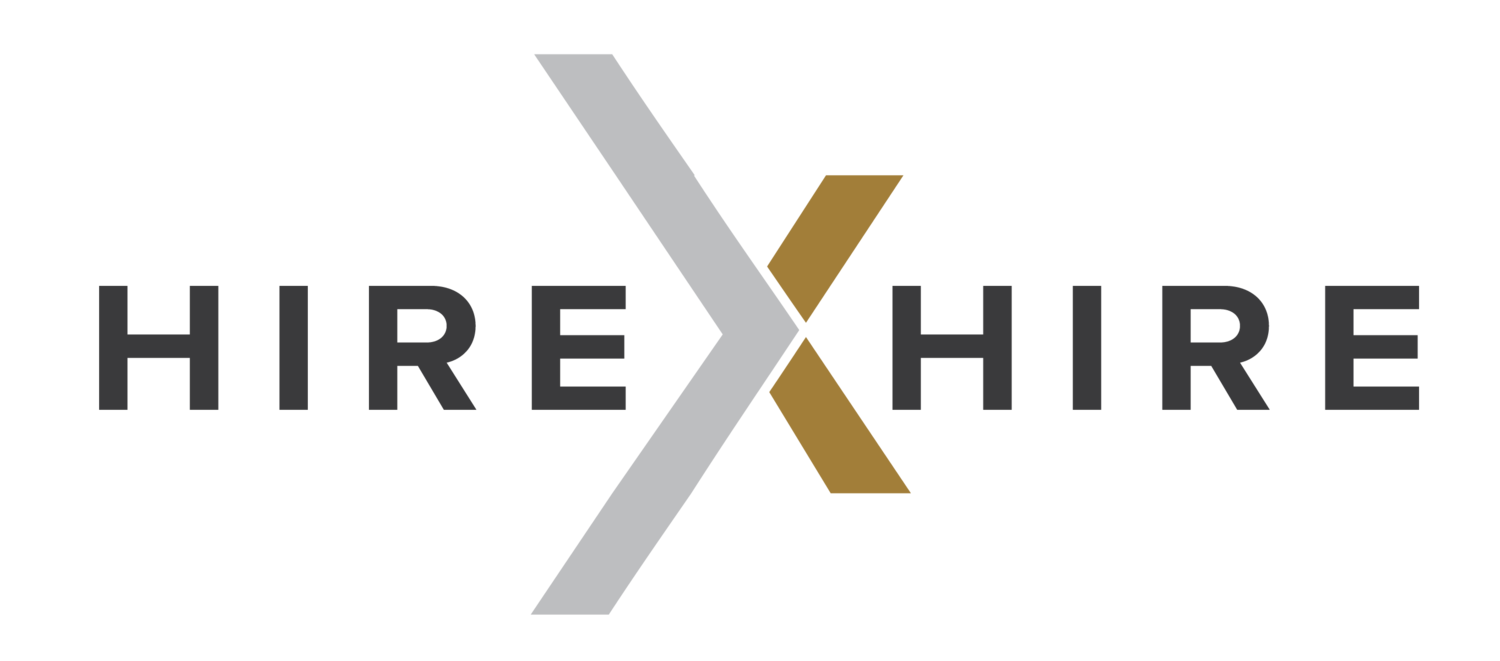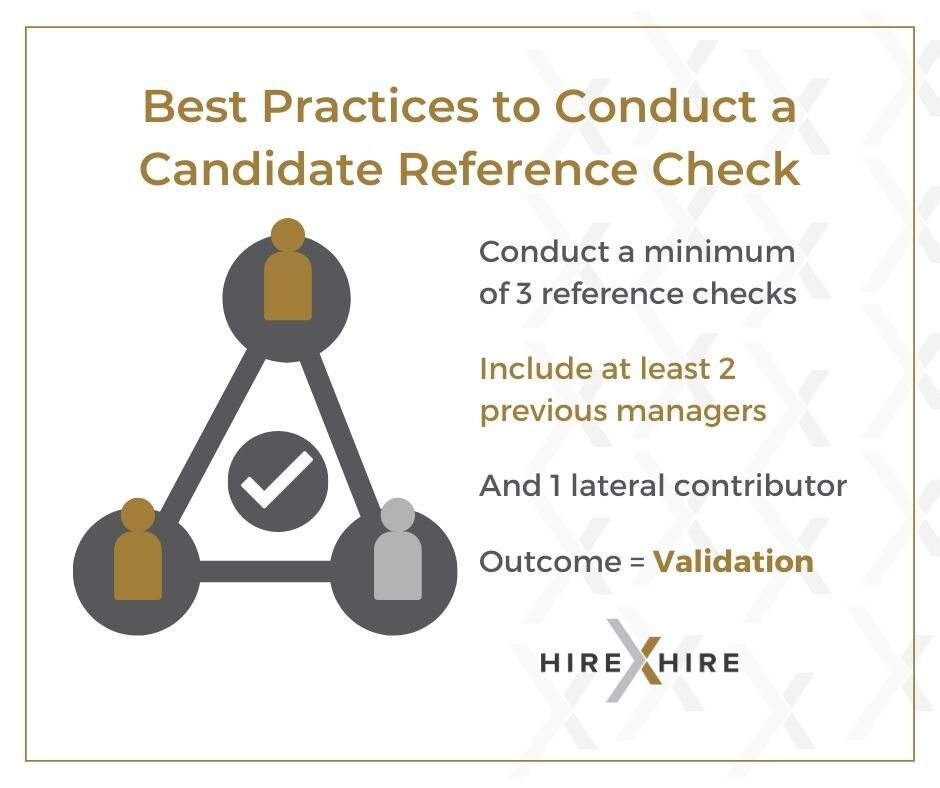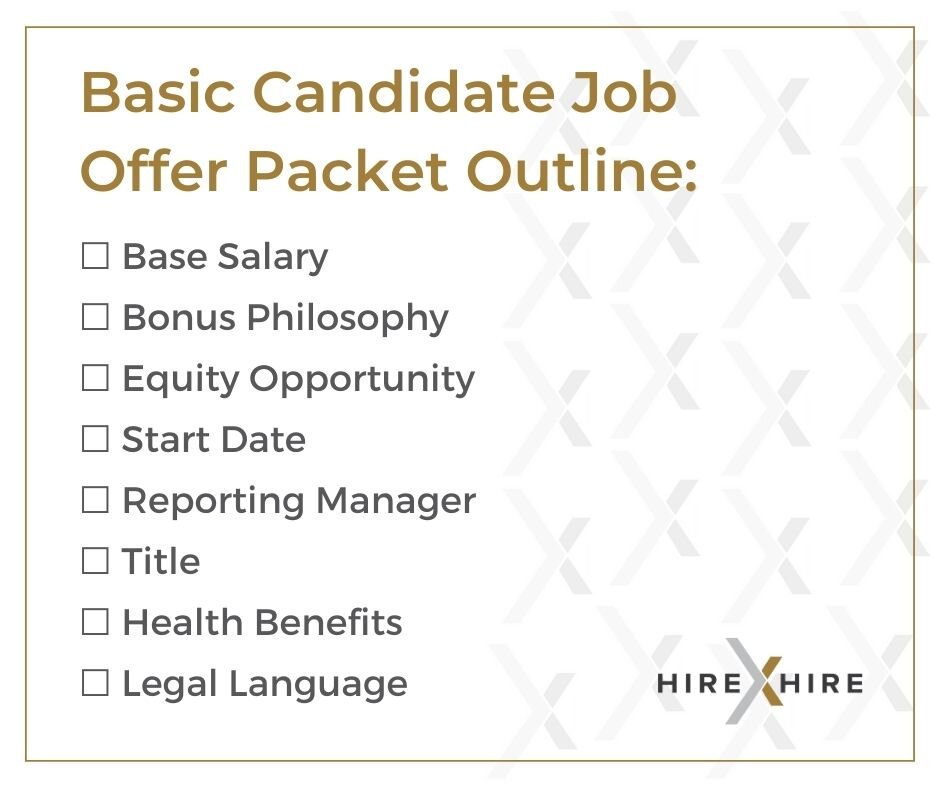Recruiting Framework Step 5: Formalize Offers and Onboarding
This is Step 5 of a five-part series on building and managing your pragmatic recruiting framework. Click to read the overview of all five steps, Step 1: Build Your Talent Pipeline, Step 2: Narrow Your Funnel with Phone Interviews, Step 3: Master Onsite Interviews, or Step 4: Incorporate a Role-Related Scenario.
Step 5: Formalize Offers & Onboarding
You’ve Found the Best-Fit Candidate for Your Role! Now What?
By this point, most employers have looked through countless resumes, phone screened a dozen individuals, had a handful of in-person conversations, and now you have made your choice. Finding the ideal candidate is really exciting! But the deal is not done. Many employers forget that these conversations are not exclusive. Likely, the high-performance candidate who checks all your boxes is also being considered by another interested employer(s).
Step 5 of your recruiting process is critical. “How” you present a job opportunity may be the difference between a candidate choosing you over another job.
So celebrate finding your ideal candidate and move forward quickly. There will be plenty of time to pop the champagne after the offer is signed, sealed, delivered.
What should you do once you’ve qualified a candidate but before you make the job offer?
Begin by aligning with the key decision-makers. Does everyone agree on the best-fit candidate? Yes? Great - this should have been covered already in your roundtable! Now, what about the details of the offer?
Before you extend any formal or informal offer, you will need to check the candidate’s references.
We recommend connecting with at least three contacts provided by the candidate, and at least two of which were direct managers or executives of the candidate. If the reference checks went well, you likely have validated your insights gathered during the interview process.
The next step is to craft a compelling vision for this individual at your company.
Throughout the interview process, you’ve learned about the candidate’s key motivators or evaluation criteria for their job search. Your offer pitch should be crafted based on the candidate’s priorities.
For example: If the candidate has made comments like, “I don’t want to drive more than 30 minutes,” then you know that location is a priority and can highlight your company’s proximity to the candidate (or take steps to mitigate knowing you are located further than the candidate would prefer). And when you hear, “I want an opportunity to move into management,” you should consider how to incorporate career growth in your pitch strategy.
In this case, your offer pitch could include statements such as: “We can see you starting by owning this role, but there could be an opportunity to move into management. We are projecting to hire more team members within the next 12 months.” While you want to consider everything important to the candidate, you should only make truthful statements. So if your office is 45 minutes from the candidate’s home, don’t sell the convenience of the commute or promise remote work opportunities if it is not being realistically considered. The candidate should never feel that they were tricked into an offer.
The offer pitch should clearly convey how YOUR opportunity advances the candidate towards their goals. Incorporating a few personal touches during the offer process will separate a stronger employer brand from lesser competitors. When you use authentic, transparent communication about the professional opportunity and offer, you set appropriate expectations and set the future employee up to be successful.
What are the most commonly asked questions from a final candidate?
At this point, there should not be ambiguity on the role. If the candidate still has questions about the job expectations, your communication process or the candidate must be revisited.
The most common questions you should expect relate to your company's perks, benefits, and some of the finer details of employment. The candidate will usually want to understand healthcare coverage and cost, paid time off, 401k, maternity and paternity, remote work flexibility, commuter benefits, cell phone, and tech-provided assets. These details are necessary to evaluate and compare the opportunity and compensation holistically.
How do you present an offer to a candidate?
When you are ready to make the offer, it’s best done verbally (via phone or in-person) with paperwork to follow. This is important for a few reasons. This is your chance to share the opportunity story and gauge the candidate’s response. By personalizing the conversation, you show that you value their interests and priorities.
Some hiring managers love to make offers, and we encourage HMs to be involved as much as possible. We’ve learned that candidates tend to be harder on a recruiter than their future manager. They don’t want to burn a bridge and will be more flexible throughout negotiations knowing they will be regularly working with this individual in the future. When the HM reaches out, it also makes the first day on the job a little warmer for the new employee.
An Example Verbal Offer Script could go as follows:
“Thanks so much for your time exploring a career with us. The team really liked your experience in [insert relevant experience X, Y, Z], and we felt like you were a great culture fit. We see [call out specific experience] as a great opportunity, and we would like to extend you an official job offer. Congratulations!
No need to remember all of these details. I will follow up with everything in writing after our call. The title being offered is [insert title] based in our [insert location] office. You will report to [insert manager name], and the comp and benefits include [insert base, bonus, and other relevant perks/benefits]. We were hoping to have you start with us on [insert start date].
More specific details on our benefits will be included in the offer packet for your review. Based on what I’ve shared so far, do you have any immediate questions or concerns?
Great. I’ll follow up with the offer package we discussed in writing. When do you think you’d be comfortable making a decision?”
They will ideally express excitement, followed by a few questions. You will have better control over keeping the tone positive in a conversation versus an email.
For example: The candidate may rebut with, “How flexible are you on the base salary?”. You now have the opportunity to respond with, “Well, the team thought this was a very fair offer based on your experience and the market value of the role, but if you have concerns about pay, we’re open to discussing the package.”
The candidate may bring up a deal-breaker requirement or begin negotiations at this point. If the requests are reasonable, you can bring them back to the hiring team to get approval and make the adjustments to the formal offer packet.
What information should you include in the candidate’s job offer packet?
The Basic Outline of What to Include in an Offer Letter Includes:
Base salary
Bonus
Equity opportunity
Start date
Reporting manager
Title
Health benefits
Legal language
You can copy and save the graphic on the right to easily reference it in the future.
How do you present a formal job offer to the candidate?
Very carefully.
In an email or letter, reiterate the professional opportunity for the candidate. Include the offer letter, non-disclosure agreement, summary of benefits and perks (cost and coverage), and any relevant brand or marketing collateral.
We do not recommend setting a hard deadline or ultimatum. In our experience, an ultimatum triggers a fight or flight response in the candidate. Instead, we’ve found success in giving perceived control by asking, “Based on what you’ve heard, when do you think you will make a decision?” The candidate almost always assigns their own deadline to avoid coming across as indecisive. The timeline must, of course, be mutually agreeable to both parties. If the candidate is stalling, you may need to turn on the pressure. So with each communication, you can reinforce the call to action with statements such as, “Upon negotiation, will you sign the papers?”
The economy sets who has the leverage. But, leading the candidate experience by showing respect for the business relationship is always a best practice for strengthening your employer brand.
How do you ensure a positive experience after a candidate accepts the job but before they start?
This is big. Ready? One of the most common mistakes employers make after they receive the candidate’s signed offer letter is doing nothing.
We see this too often. As an employer, the recruiting task may feel complete. The interviews are done, the offer is signed, and the start date is still two weeks out. But it can be immensely discouraging to the candidate when they send over a signed offer letter and then … crickets. It has been an emotional roller coaster, stress of interviewing, excitement of new opportunities, and then nothing.
This communication gap is often caused when there are different recruiting and onboarding persons from our experience. Make a conscious effort to close this gap with simple communication expressing excitement, and setting interim expectations.
An Example New Job Welcome Script Could Be:
“Congratulations on accepting your new role. We are so excited for you to join the team. Most heavy lifting is done for now, and we don’t require much from you in the next week. Focus on wrapping up your current role or personal priorities. The next time we will likely reach out will be [insert date].”
Close the communication gap. That’s the basics. But if you want to welcome your new employee with an above and beyond recognition, you can consider sending them a branded swag bag with a company shirt and mug, send a handwritten welcome note signed by their new team, invite them to follow, and use the employer brand #hashtag to document their experience.
A Note on Onboarding:
This is all great, but if you mistreat or neglect your new employee on day 1, your exceptional recruiting process doesn’t matter. Set their expectations before they even arrive. Many companies have structured onboarding with formal employee orientation or offsite immersive training. However, most startup or small teams don’t have that scale of resources.
Regardless of the scale of your process, a few days before the start date, you should contact your new employee to set the big picture framework for the first few days and weeks. If you don’t have an orientation program, you can tell them they will meet with HR, go through the legal paperwork, set up your computer, and then just start throwing introductory tasks at you.
In Conclusion
You like them, and they like you, but is that enough to go steady? “How” you present an offer is a craft. Your approach should be personal and consistent. Remember, you are not the only company seeking top talent. So prioritize communication. Make the candidate an offer crafted around their personal and professional goals. Make them a candidate experience they can’t stop thinking about.
Each step of your pragmatic recruiting process (building your talent pipeline, conducting phone interviews, conducting in-person interviews, and assigning a role-related scenario) culminates with the signed offer letter. And the entirety of the recruitment process kicks off your everlasting employer brand experience.
If you have any comments or questions about building out your pragmatic recruitment framework, you can contact our talent consultants here.












